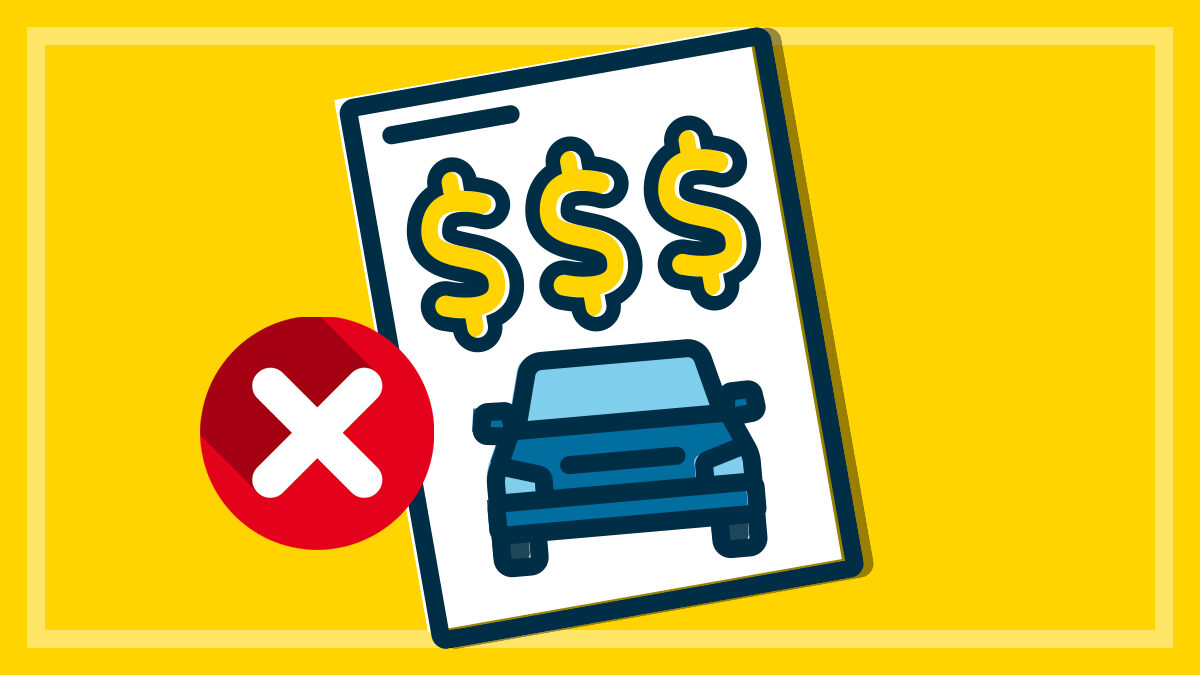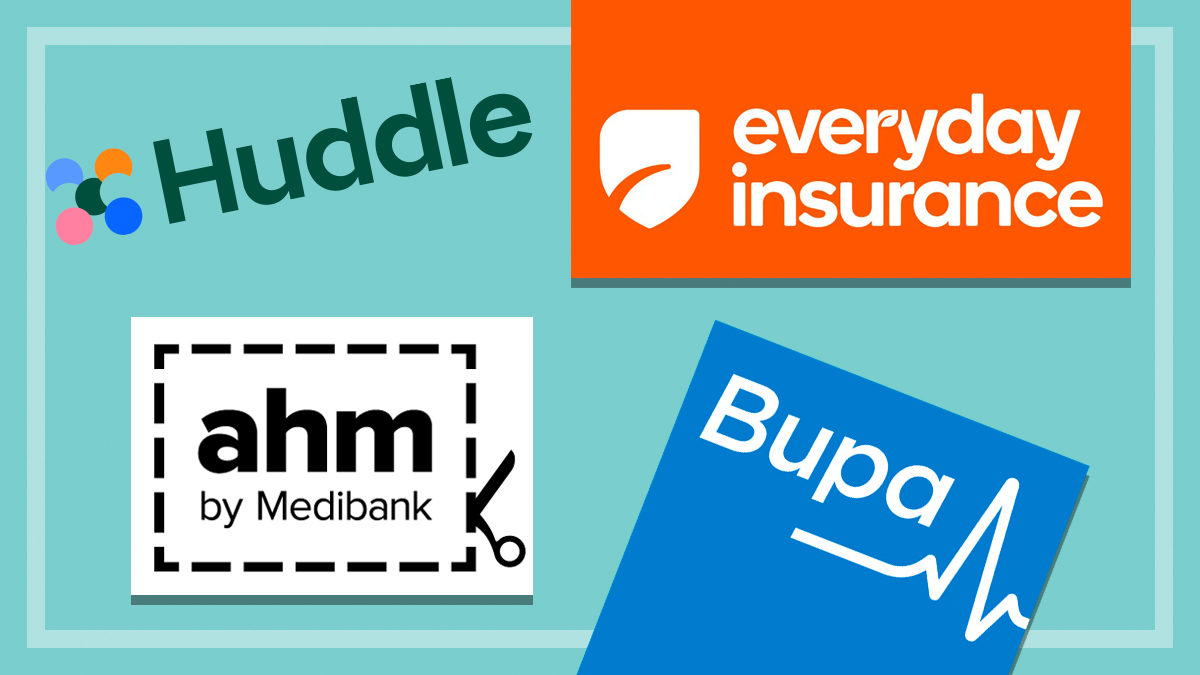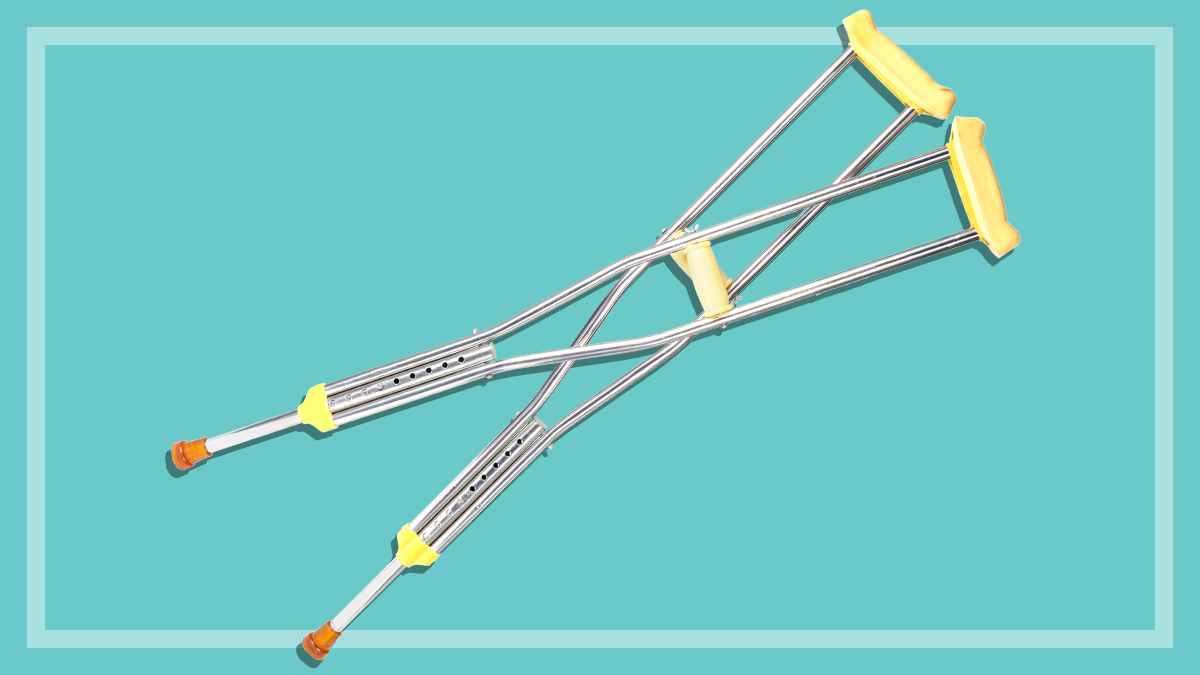Get our independent lab tests, expert reviews and honest advice.
Is it worth buying health insurance to avoid the Lifetime Health Cover loading?

Need to know
- If you're 31 and don't have private hospital cover, you'll have to pay a higher premium for every year you delay
- This Lifetime Health Cover loading is designed to encourage people to take out private cover earlier in life
- Our research suggests it’s cheaper to pay the loading later than it is to buy health insurance now that you don’t need
On this page:
- How does Lifetime Health Cover work?
- Why are people punished for buying health insurance later in life?
- Should you buy insurance at 31, or when you need it?
- Is the LHC loading that bad? We compare the numbers
- Don't be Basic
- What if I have to pay the Medicare Levy Surcharge?
Every year in June, health funds and comparison websites trot out their marketing campaigns trying to convince 31-year-olds to buy health insurance before the 30 June “deadline”.
So what’s so important about 30 June? And why age 31?
This isn’t just about 31 year olds – it’s for anyone over 30 who is thinking about one day having private health insurance (PHI). In short, for every year over age 31 you put off getting hospital cover, you’ll have to pay a penalty if and when you do buy insurance.
It’s called the Lifetime Health Cover (LHC) loading. But don’t worry, it’s not as big a deal as it seems.
How does Lifetime Health Cover work?
LHC is a government policy that aims to get younger people into private health insurance by punishing them for not buying it sooner. It does this by charging you an extra 2% for every year that passes after turning 31 where you don’t have eligible hospital cover. If the PHI rebate is a carrot, LHC is one of the sticks.
The year isn’t counted from your birthday. It gets counted from 1 July for everyone – that’s why insurers go on about the June “deadline”. Every year in July, everyone aged 31 and over who doesn’t already have hospital cover will have their LHC loading increased by another 2%.
For example, if you take out insurance at 41, your premium will be 20% higher than a 31-year-old on the same policy. We call that extra charge the LHC loading.
The LHC loading for couples is the average of each partner’s rate. So if one of you has to pay a 20% loading and the other is on 10%, you’ll pay a 15% loading on a couples or family policy.
The good news is it isn’t forever: you only pay the loading for 10 years, then your premiums drop back to normal, as long as you keep paying for hospital cover.
You only pay the loading for 10 years, then your premiums drop back to normal, as long as you keep paying for hospital cover
If you drop your insurance for more than three years (and these don’t have to be consecutive years), if you do take it out again, it will be as if you never had it at all. You’ll have to pay the full loading again.
The loading only applies to hospital cover. Extras policies – for things like dental and optical – are a completely separate thing, even though health funds will try to sell you both of them. Having only an extras policy won’t get you out of paying the LHC loading if you decide you want hospital cover later.
There are other complicated rules which might affect you if you moved overseas previously, for example.
There are other complicated rules which might affect you if you lived overseas, for example.Why are people punished for buying health insurance later in life?
The LHC loading – or the threat of it – works. There are about 222,000 more people in their early 30s with hospital cover than people in their late 20s. Insurers say the goal of the LHC is to get more people into the private system and relieve the strain on our public hospitals. But that’s not the end of the story.
The private health insurance industry needs a constant supply of healthy young bodies to pay for the increasingly costly medical care of older people.
Younger people tend not to come with chronic illnesses and spend less time in hospital than older people, making them cheaper to insure. In 2024, health funds paid $199 in hospital benefits for every insured person in their thirties – well below the $379 population average.
But as you would expect, this pales in comparison to healthcare costs for older age cohorts (the average benefit received by people aged 70 to 79 in 2024 was $1060).
Health funds aren’t allowed to set premiums according to a person’s age or health. Before discounts and loadings come into play, everyone pays the same base premium for the same policy.
Younger health fund members are subsidising the private hospital care of older Australians. If this wasn’t the case then the private health insurance industry might spiral into collapse.
This infographic shows statistics about the benefits paid for private hospital treatment by health funds. The data was published by APRA for the year 2024.
The average benefit received from health funds by people aged 30 to 39 is $199.
The average benefit received by people aged 70 to 79 is $1060.
Younger people are much cheaper to insure, making them valuable customers for health funds.
For female PHI customers aged 0 to 9 the average hospital benefit is $60. For male PHI customers aged 0 to 9 the average hospital benefit is $74.
For female PHI customers aged 10 to 19 the average hospital benefit is $74. For male PHI customers aged 10 to 19 the average hospital benefit is $62.
For female PHI customers aged 20 to 29 the average hospital benefit is $205. For male PHI customers aged 20 to 29 the average hospital benefit is $106.
For female PHI customers aged 30 to 39 the average hospital benefit is $288. For male PHI customers aged 30 to 39 the average hospital benefit is $95.
For female PHI customers aged 40 to 49 the average hospital benefit is $239. For male PHI customers aged 40 to 49 the average hospital benefit is $145.
For female PHI customers aged 50 to 59 the average hospital benefit is $341. For male PHI customers aged 50 to 59 the average hospital benefit is $297.
For female PHI customers aged 60 to 69 the average hospital benefit is $577. For male PHI customers aged 60 to 69 the average hospital benefit is $637.
For female PHI customers aged 70 to 79 the average hospital benefit is $993. For male PHI customers aged 70 to 79 the average hospital benefit is $1136.
For female PHI customers aged 80 to 89 the average hospital benefit is $1360. For male PHI customers aged 80 to 89 the average hospital benefit is $1626.
For female PHI customers aged 90 and above the average hospital benefit is $1413. For male PHI customers aged 90 and above the average hospital benefit is $1821.
Source: APRA, Private Health Membership and Benefits.
Should you buy insurance at 31, or when you need it?
The LHC loading is the health insurance marketer’s best friend. The message is one of the oldest tricks in the book: you’d better buy now, because it’ll be more expensive tomorrow.
There are two sure-fire ways to avoid paying the LHC loading. The first is to buy hospital cover before the next 1 July after you turn 31, and to hold it for the rest of your life. The second is to never buy health insurance at all.
But is the loading really that great a penalty, compared to buying expensive insurance you might not actually want or need?
We crunched the numbers to find out which of these two options is the better financial decision:
- Buying early: purchasing the cheapest Basic hospital policy you can find every year from age 31, so you never have to pay the LHC loading
- Buying later: purchasing hospital cover at a later date, paying the LHC loading for ten years with a policy that suits your medical needs
Is the LHC loading that bad? We compare the numbers
We went back through 25 years of pricing data and found the cheapest hospital policies in every state in each year since 2001. We worked out how much a single person would pay (after the base government rebate) if they bought the cheapest policy available in their state when they turned 31, and kept purchasing the cheapest policy every year until today.
We then projected what a person in the same circumstances might pay in LHC loading over the next decade, if they bought hospital cover for the first time this year.
We modelled hundreds of possible scenarios, but to illustrate the point let’s just look at two similar hypotheticals.
Option #1: Buying cheap cover from age 31
Meet Felix. Felix lives in Victoria and turned 31 in early 2020. That year in June he took out a cheap junk policy – not because he thought he needed it, but because he wanted to beat the 1 July LHC “deadline”.
Over the next five years until 2025 he would have paid at least $4520 in premiums (with the taxpayer chipping in an extra $1480 via the PHI rebate).
Option #2: paying the LHC loading
Now here’s Jemima: same age, same state. She doesn’t buy insurance at 31, but in June 2025 at age 36 uses CHOICE’s health insurance comparison to find a Gold policy.
She holds Gold policy for five years (switching annually if she finds a cheaper one), before dropping to the Silver tier, which she keeps for the remainder of her LHC decade.
Because she bought health insurance five years after turning 31, Jemima pays a 10% LHC loading. Our projections estimate that over those ten years Jemima can expect to pay about $3000 extra due to the LHC loading.
In every scenario but one Jemima came out ahead by paying the LHC, rather than buying any policy – even the cheapest – from age 31
Let’s compare the pair. Felix does what the government and PHI industry says and buys into health insurance at a relatively young age.
He never claims on his Basic policy, which is fairly easy as it barely covers anything, and even then only in public hospitals. He spends $4500 to get basically nothing.
Jemima buys insurance that she actually wants, when she wants it. For this she gets penalised $3000 through the LHC loading. That’s still $1500 less than the unlucky Felix paid.
So are there any situations where buying budget insurance at 31 is cheaper than copping the LHC loading? We compared Felix’s approach (buy Basic every year from age 31) to a range of possible scenarios like Jemima’s, where you pay the LHC.
We wanted to project how much you might pay in LHC loading at different levels of cover. The higher the cover tier, the more you can expect to pay in LHC.
In each scenario, our persona began with a Basic, Bronze, Silver or Gold policy. In some scenarios they held the same level of cover for ten years, while in others they dropped to a lower tier after a number of years.
Step one: find the cheapest Basic hospital policy in your state. Step two: don’t buy it
Armed with price projections for our range of scenarios, we then compared the estimated LHC cost with the historical cost of cheap health insurance. (See below for how we made these projections).
In every scenario but one Jemima came out ahead of Felix by paying the LHC, rather than buying any policy – even the cheapest – from age 31.
The only scenario where the LHC would cost more was if Jemima bought a Gold policy for the whole decade. In the other scenarios, the upside to paying the LHC ranged from a couple of hundred dollars to $3200, depending on the level of cover Jemima chose.
Don’t be Basic
All up, we made 9744 comparisons between scenarios like Felix and Jemima’s. We varied:
- the state (prices for the same policy vary from state to state)
- the age of our personas (to compare the cost of longer periods of buying Basic against higher LHC loadings for older people), although we only compared personas of the same age
- the policy tier our LHC payer purchased, and the years they stayed there before dropping cover
Paying the LHC was the better option in 84% of comparisons. The only ones that showed an advantage to buying Basic cover from age 31 involved paying the LHC on a Gold policy for at least several years.
We’ve devised a four-step process where you pay LHC loading and still come out ahead:
- Find the cheapest Basic tier hospital policy in your state.
- Don’t buy it.
- Repeat from step one the next year.
- Take out the right health insurance when you’re ready to use it.
We went back through 25 years of historical pricing data and found the cheapest hospital policies in every state for every year from 2001. We calculated how much these policies would cost, factoring in the base level government rebate for that year.
We worked out how much a single person would pay if they bought the cheapest policy available in their state when they turned 31, and kept purchasing the cheapest policy every year until today. We also modelled how much they would spend if they bought the cheapest Gold tier policy, since we wanted to see the cost of actual health cover instead of junk policies.
Historical prices were sourced from the CHOICE magazine archives. The cheapest low-cover policies we had recommended for avoiding the Medicare Levy Surcharge were “purchased” in that year. Data was unavailable for 2006, and for that year we have taken the median between the relevant 2005 and 2007 prices as the “cheapest price”.
We then modelled what that another person (of the same age, in the same state) would pay in LHC loading over the next ten years, if they bought hospital cover for the first time in June 2025. We tried to capture a range of purchasing patterns, in particular the common practice of dropping cover as insurance gets more expensive. In some scenarios, our persona stayed on the same cover tier (Gold, Silver, Bronze or Basic) for ten years. In the other scenarios they purchased one tier and dropped to a lower tier after a number of years. For these scenarios we chose policies with a $750 excess.
To predict future premiums we calculated the average annual rate of increase, for premiums at each cover tier since 2022. For Basic and Bronze policies we assumed a 2% annual price increase. For Silver policies we modelled a 3% increase each year, and for Gold policies we projected an 11% price hike. Once we had calculated how much PHI might cost in the past and in the future, we compared the two sets of results.
What if I have to pay the Medicare Levy Surcharge?
The Medicare Levy Surcharge (MLS) is a tax paid by people on high incomes who don’t have private health insurance. It’s tied to your income, and costs upwards of $1010 per year.
If you don’t care whether your taxes go to the government or a private health insurer, you can avoid the MLS by buying a cheap hospital policy. If you get one that costs less than your MLS then you’ll come out ahead.
Tax minimisers are good business for health insurers, so many of them offer junk Basic policies sold for just under $1010 (once the rebate is applied).
What if you’re older than 31 and your income has just passed the threshold where you have to pay the MLS? Does it make sense to buy junk insurance to avoid the MLS if you also have to pay the LHC loading?
Tax minimisers are good business for health insurers, so many of them offer junk Basic policies sold for just under $1010
Everyone’s situation will be different. The answer will depend on your LHC loading, your income (which determines your MLS and PHI rebate amounts), and the cost of the cheapest Basic policy in your state or territory.
Generally speaking, because of the effect the LHC loading has on your premium, buying Basic hospital insurance to minimise your MLS tax liability is typically only a sensible option for people on higher incomes.
For example, take a 41-year-old Queenslander with a 20% LHC loading. If they earn $118K, their MLS amount is $1180, or 1%. Taking their LHC loading and 16% PHI rebate into account, the cheapest Basic product will cost them $1295.
In this case, paying the MLS is the smarter decision, since it is $115 less than the LHC-loaded cost of junk insurance.
But if they earn $119K, this puts them in the income bracket for the higher 1.5% MLS rate, putting their surcharge at $1488. Earning more also means their PHI rebate goes to the lower 8% rate, which makes the cost of the Basic policy $1396. So in this case buying the Basic policy is the rational financial choice by about $92.
So if you’re considering whether to buy a Basic policy or pay the MLS, check whether that Basic policy is still cheaper after your LHC loading is applied to the price. If you’re only earning a little bit above the MLS income threshold you may come out ahead simply by paying the surcharge.





